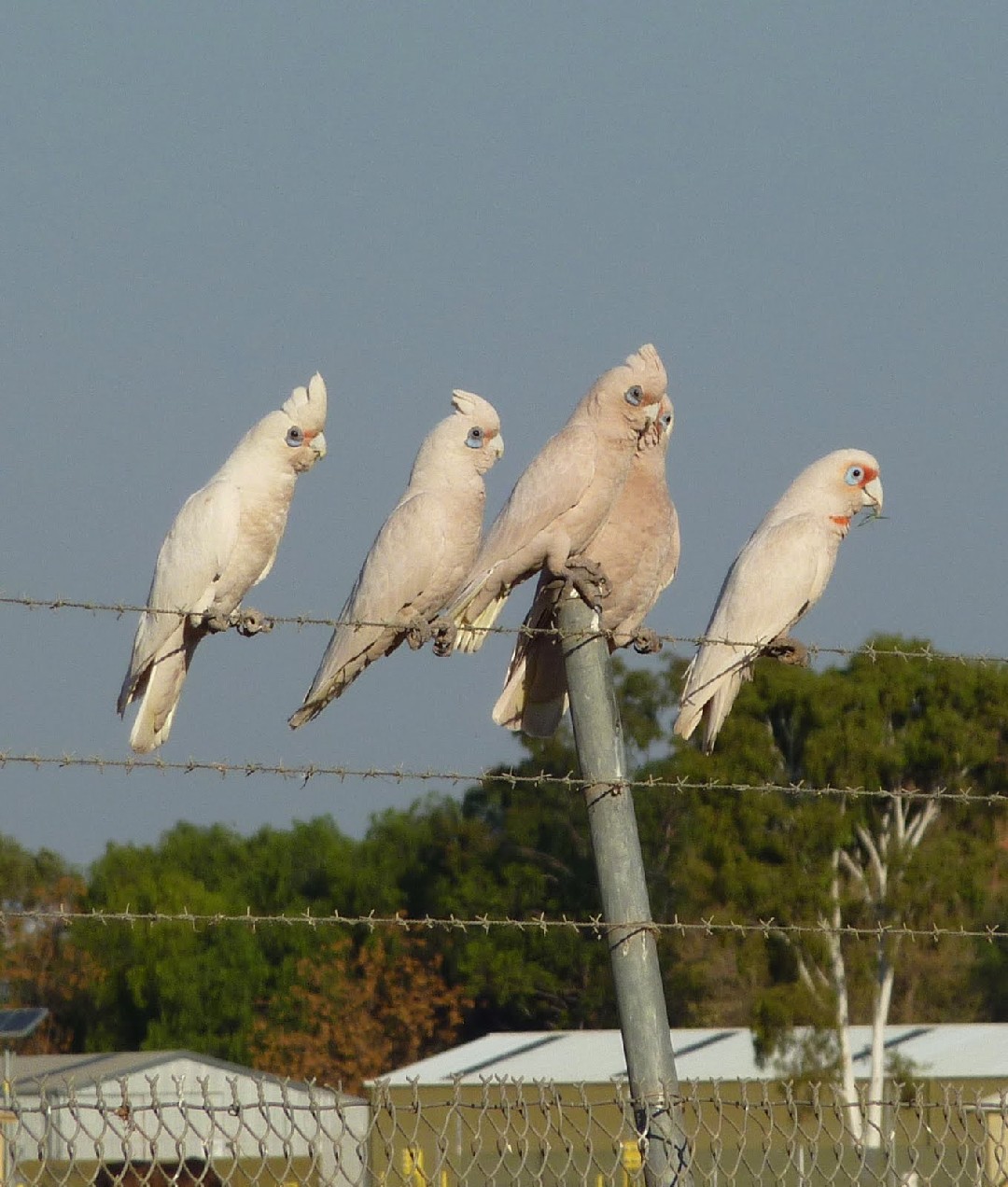Little Corella
A species of White Cockatoos and Corellas, Also known as Short-billed Corella, Bare-eyed Cockatoo Scientific name : Cacatua sanguinea Genus : White Cockatoos and Corellas
Little Corella, A species of White Cockatoos and Corellas
Also known as:
Short-billed Corella, Bare-eyed Cockatoo
Botanical name: Cacatua sanguinea
Genus: White Cockatoos and Corellas
Content
Description People often ask General Info
 Photo By http://www.comebirdwatching.blogspot.com/ , used under CC-BY-SA-3.0 /Cropped and compressed from original
Photo By http://www.comebirdwatching.blogspot.com/ , used under CC-BY-SA-3.0 /Cropped and compressed from original Description
The little corella is a small white cockatoo. It is similar in appearance to both the long-billed corella and the western corella, but the little corella is smaller, and unlike either of those species, it has upper and lower mandibles of similar length. It is easily distinguished from the long-billed corella by the lack of an orange throat bar. Females are slightly smaller than males in weight, wing length, culmen size, tarsus length, tail length and eye ring diameter. 
Size
39 cm
Life Expectancy
20-46 years
Nest Placement
Tree
Feeding Habits
Little Corella predominantly feed on seeds, including those from grasses, cereals like wheat and corn, and other cultivated plants. They forage mostly on the ground but also in trees and are known to plague agricultural areas by consuming crops.
Habitat
The little Corella thrives in a range of habitats, from arid inland deserts to temperate grassy woodlands and tropical regions, which extend to southern New Guinea. These birds are highly adaptable, often found in urban settings like parks and sports fields, as well as in agricultural lands. Although little Corella avoids dense forests, it is ubiquitous in open areas where it may become regarded as a nuisance due to its propensity to damage vegetation.
Dite type
Omnivorous
People often ask
General Info
Feeding Habits
Bird food type
Behavior
Little corellas congregate in flocks of up to several thousand, which often include other birds such as galahs, sulfur-crested cockatoos and red-tailed black cockatoos. They generally roost in trees overnight, and fly off to feed in the early morning before returning in the late evening. Flocks will often fly many kilometers between their feeding and roosting areas, and in desert areas must also fly to watering holes twice a day. 
Distribution Area
The nominate form, C. s. sanguinea is found in Northern Australia. C. s. normantoni is found on the Western Cape York Peninsula. C. s. transfreta is found in New Guinea. C. s. gymnopis is found in Central, Eastern, and South-eastern Australia. Little corellas can also be found in urban areas, including Canberra, Sydney and Brisbane, where they feed on lawns and playing fields. 
Species Status
Not globally threatened.

 Photo By http://www.comebirdwatching.blogspot.com/ , used under CC-BY-SA-3.0 /Cropped and compressed from original
Photo By http://www.comebirdwatching.blogspot.com/ , used under CC-BY-SA-3.0 /Cropped and compressed from original